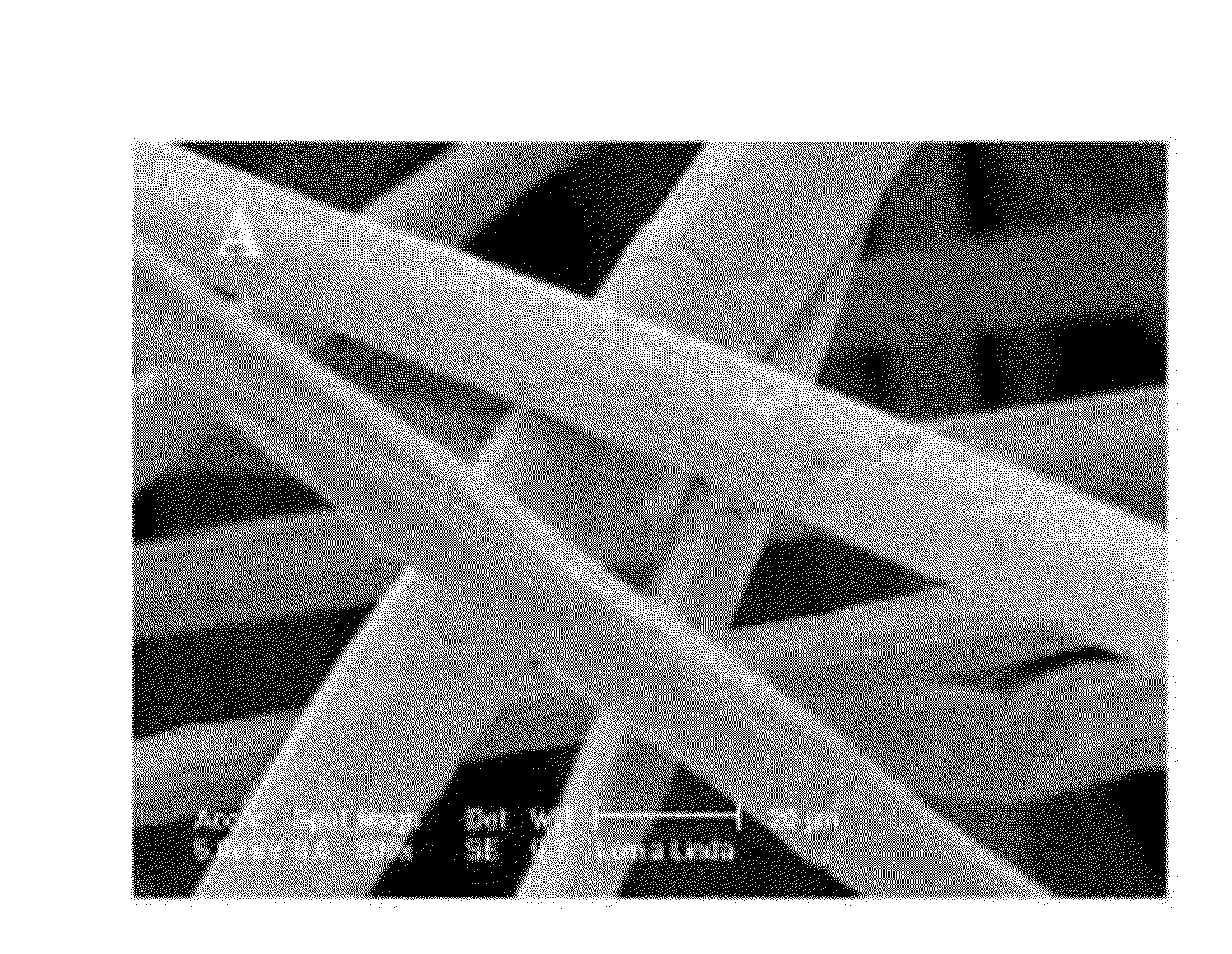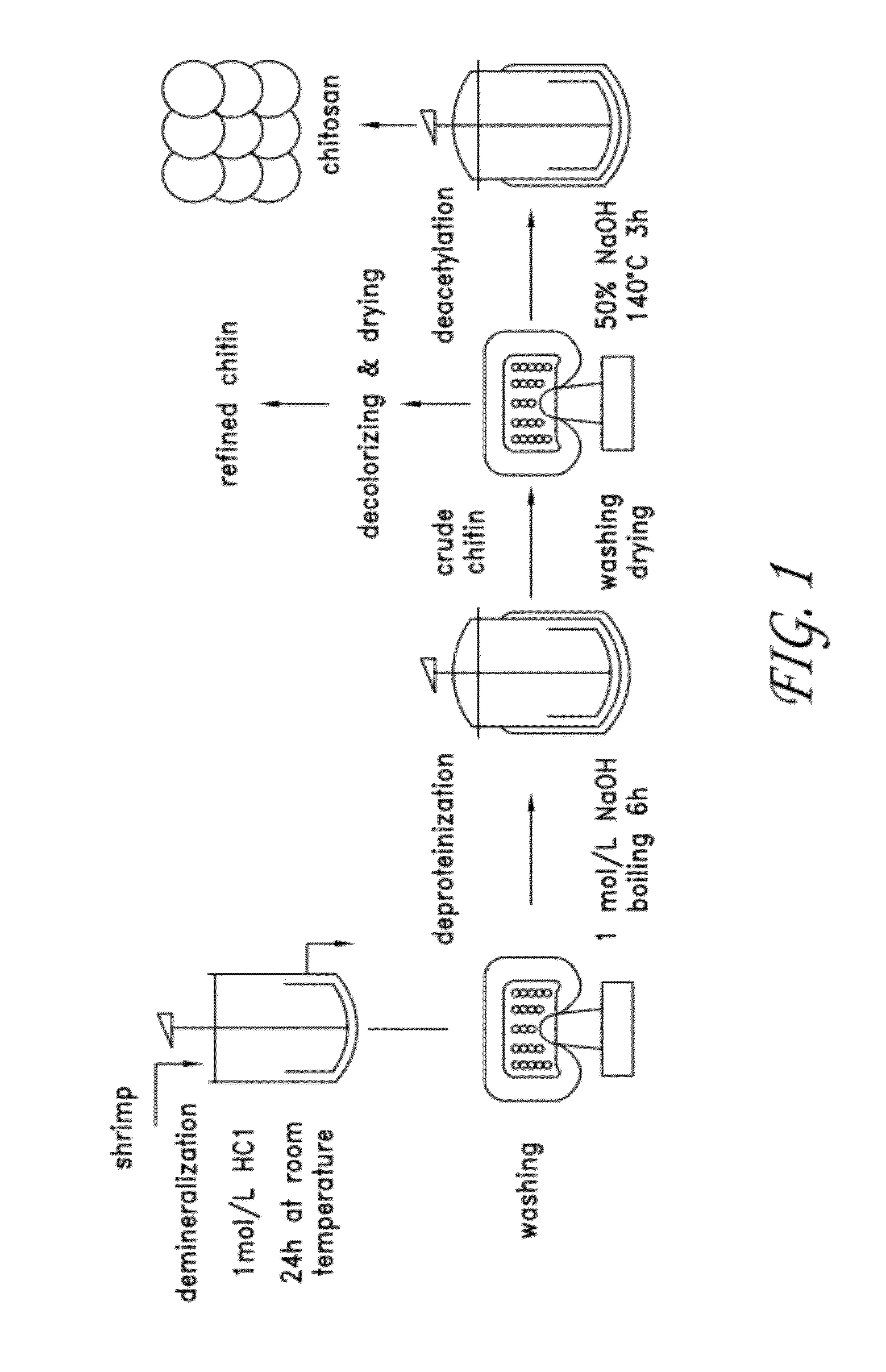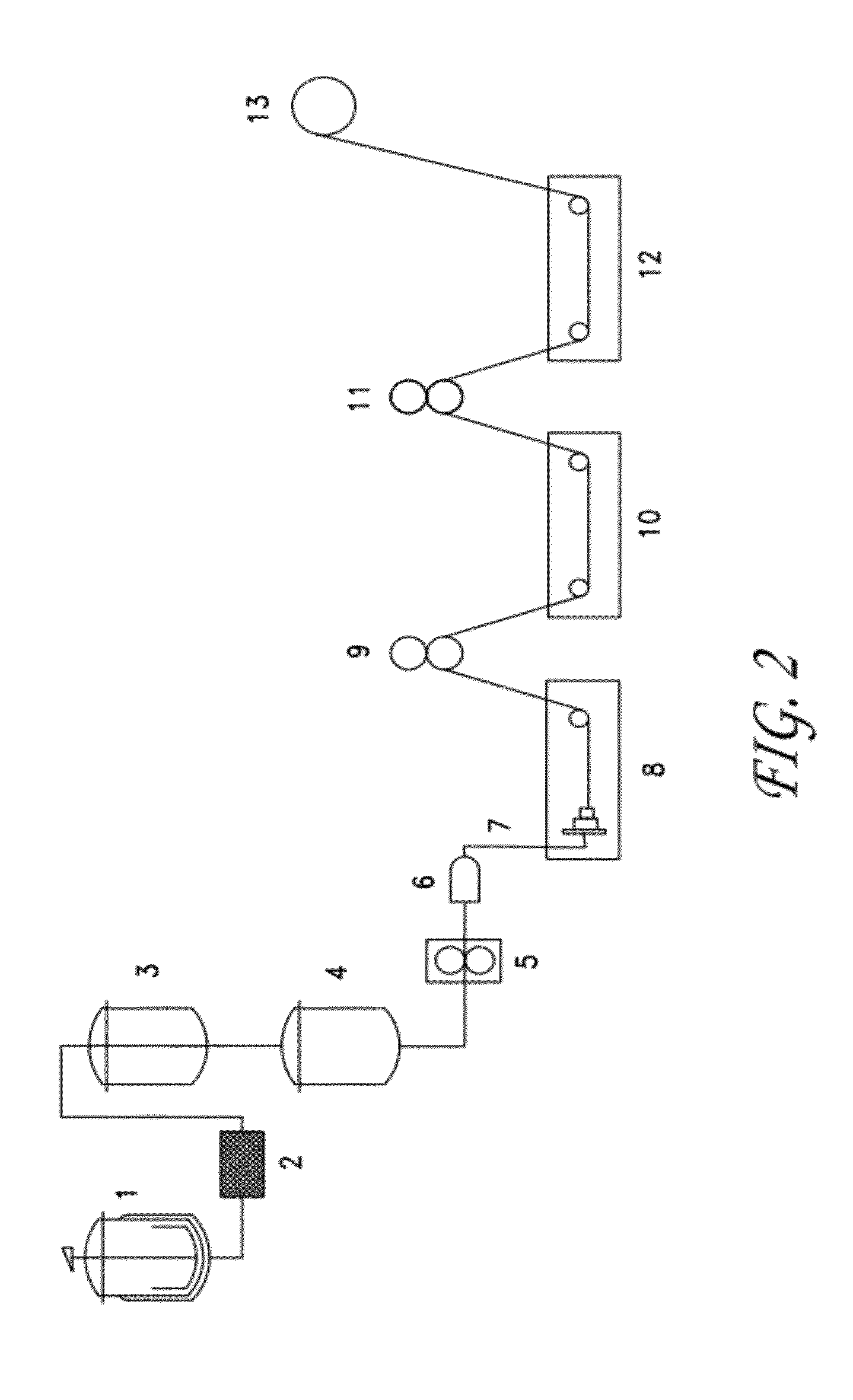Chitosan-based hemostatic textile
a technology of textiles and chitosan fibers, applied in the field of chitosan fiberbased hemostats, can solve the problems of reducing the effect of coagulopathy, so as to increase the concentration of amino groups
- Summary
- Abstract
- Description
- Claims
- Application Information
AI Technical Summary
Benefits of technology
Problems solved by technology
Method used
Image
Examples
Embodiment Construction
[0032]Chitosan is obtained from chitin, a widely available biopolymer obtained principally from shrimp and crab shell waste. Chitosan is the main derivative of chitin, and is the collective term applied to deacetylated chitins in various stages of deacetylation and depolymerization. The chemical structure of chitin and chitosan is similar to that of cellulose. The difference is that instead of the hydroxyl group as is bonded at C-2 in each D-glucose unit of cellulose, there is an acetylated amino group (—NHCOCH3) at C-2 in each D-glucose unit in chitin and an amino group at C-2 in each D-glucose unit of chitosan.
[0033]Chitin and chitosan are both nontoxic, but chitosan is used more widely in medical and pharmaceutical applications than chitin because of its good solubility in acid solution. Chitosan has good biocompatibility and is biodegradable by chitosanase, papain, cellulase, and acid protease. Chitosan exhibits anti-inflammatory and analgesic effects, and promotes hemostasis an...
PUM
| Property | Measurement | Unit |
|---|---|---|
| molecular weight | aaaaa | aaaaa |
| velocity | aaaaa | aaaaa |
| temperatures | aaaaa | aaaaa |
Abstract
Description
Claims
Application Information
 Login to View More
Login to View More - R&D
- Intellectual Property
- Life Sciences
- Materials
- Tech Scout
- Unparalleled Data Quality
- Higher Quality Content
- 60% Fewer Hallucinations
Browse by: Latest US Patents, China's latest patents, Technical Efficacy Thesaurus, Application Domain, Technology Topic, Popular Technical Reports.
© 2025 PatSnap. All rights reserved.Legal|Privacy policy|Modern Slavery Act Transparency Statement|Sitemap|About US| Contact US: help@patsnap.com



